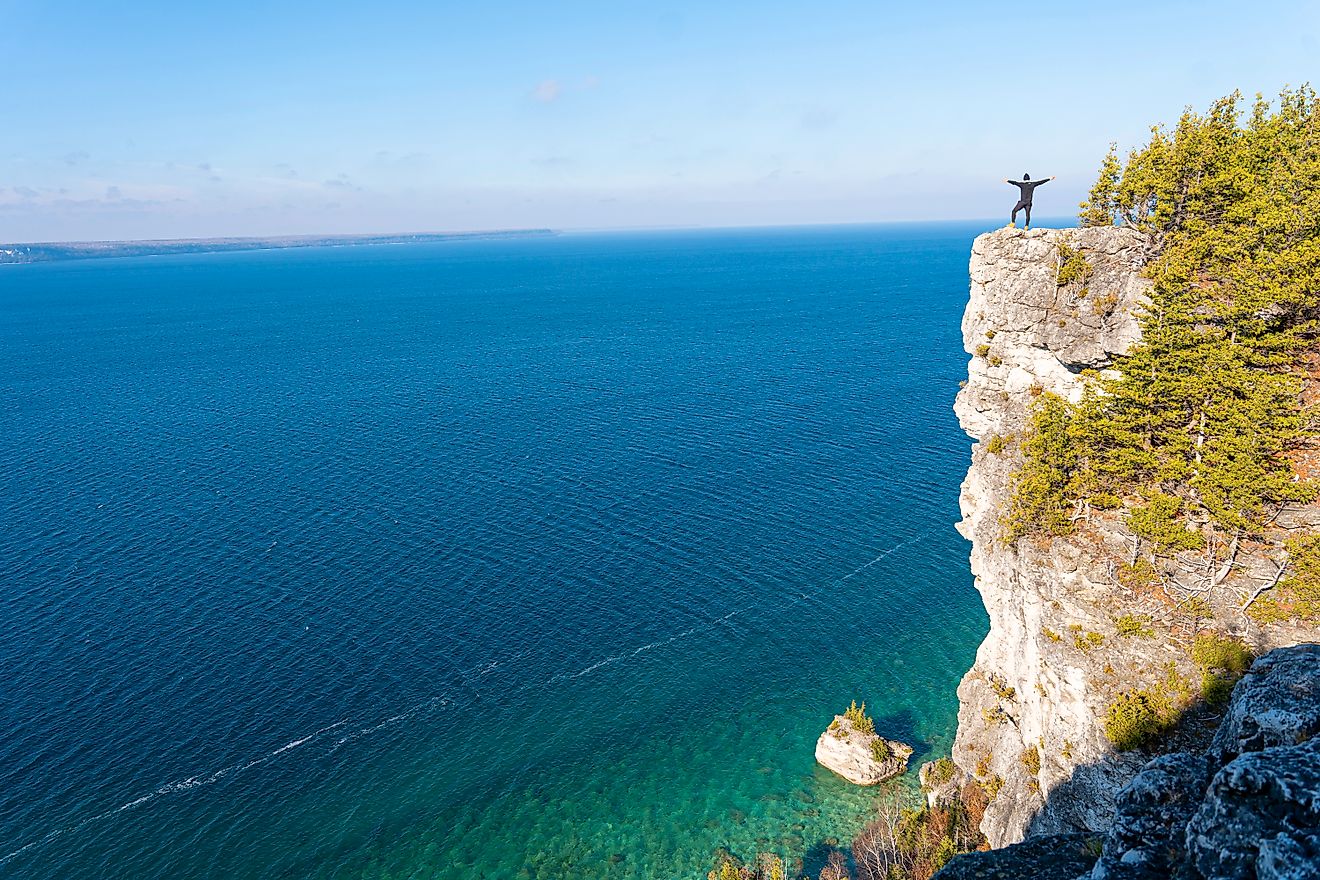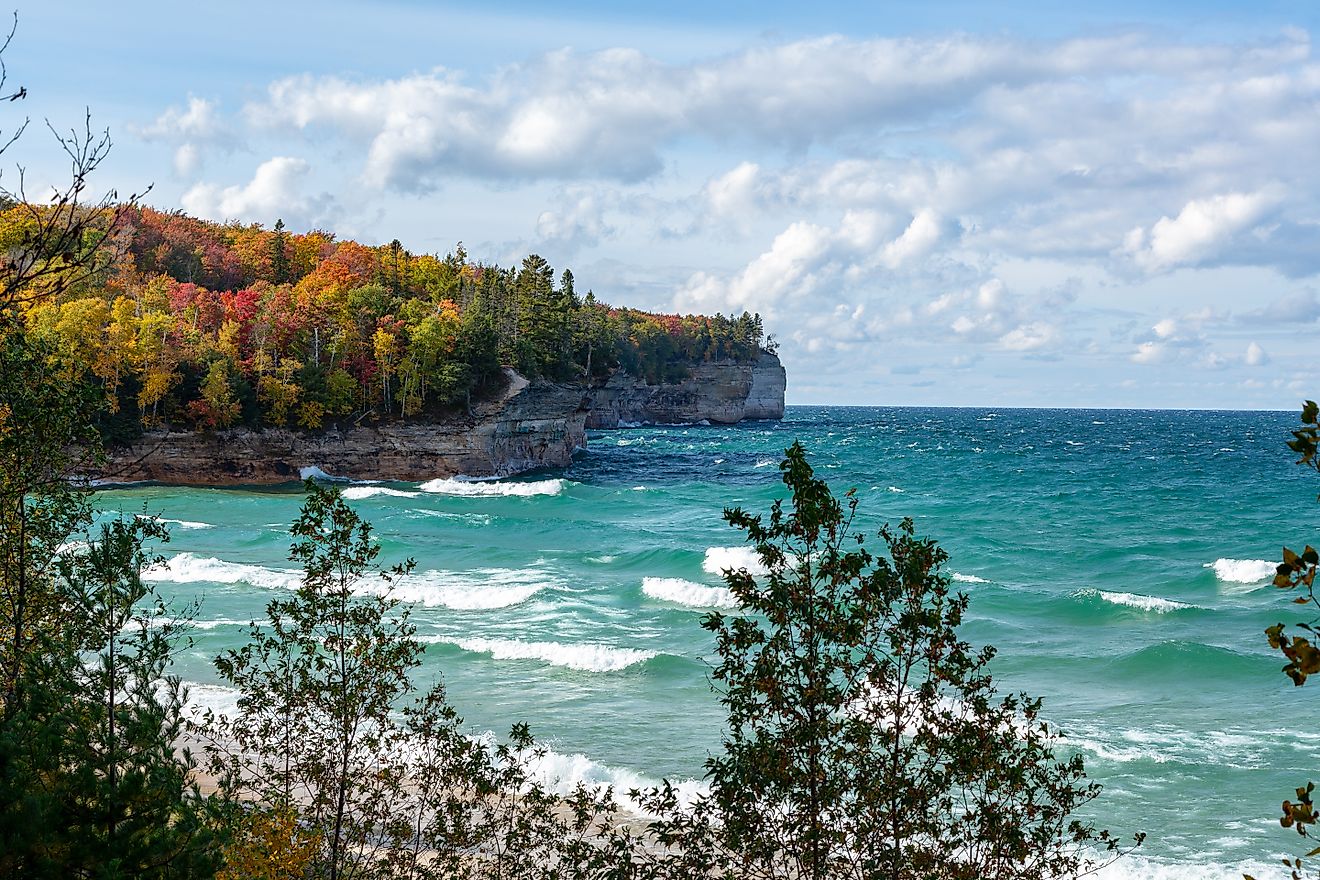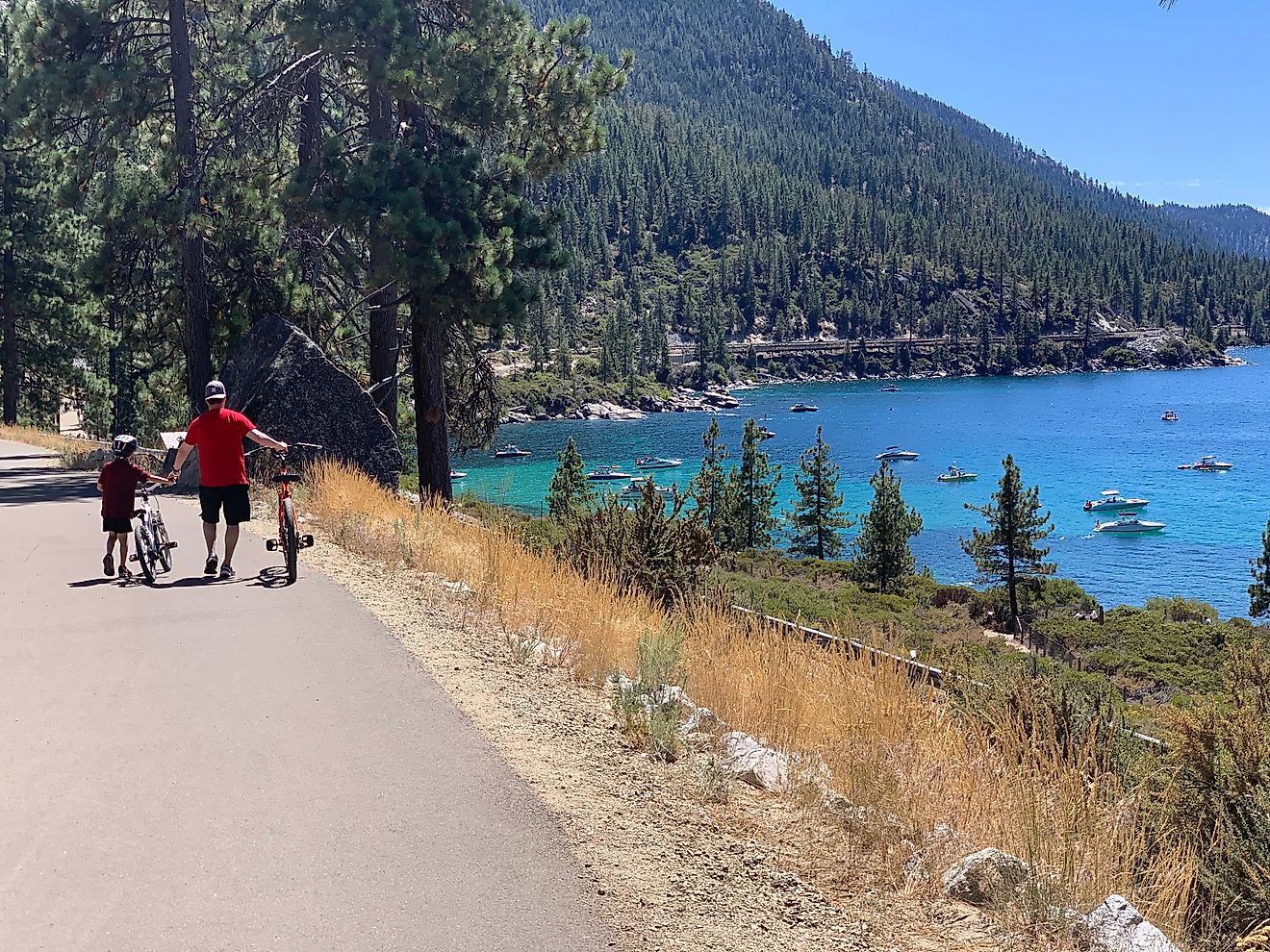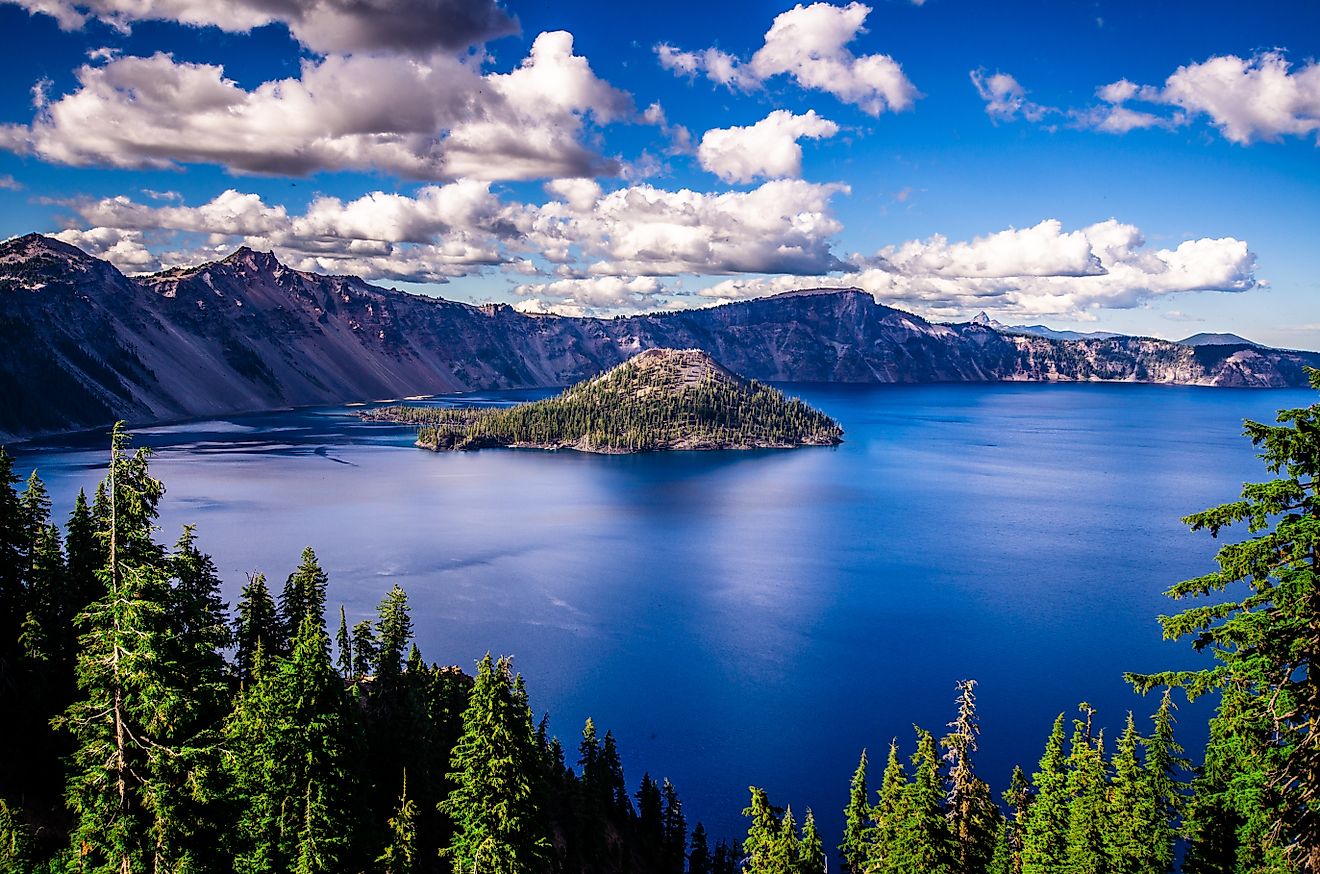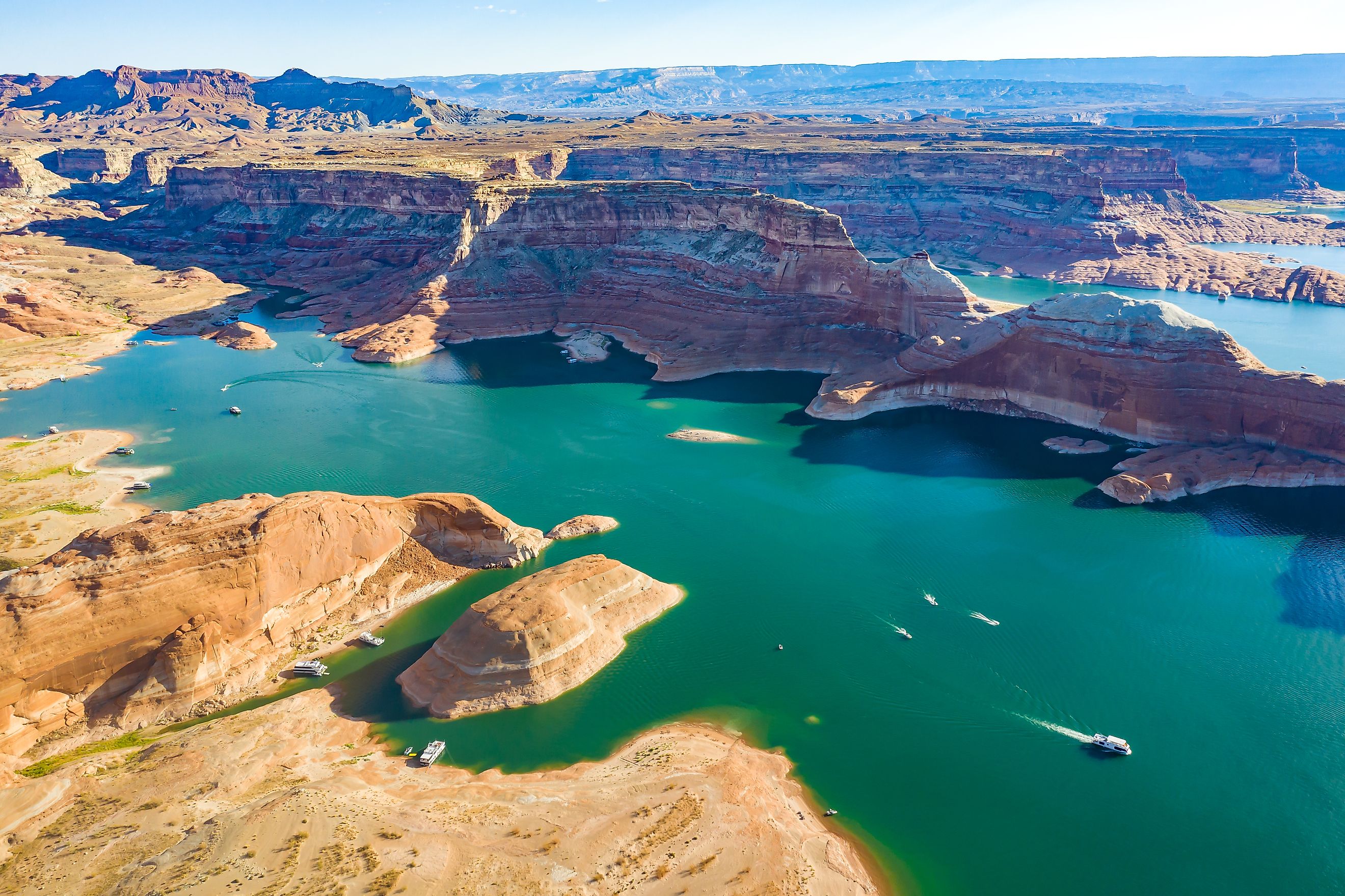
Lake Powell
Lake Powell, an expansive artificial reservoir straddling the Utah-Arizona border within the United States, stands as a testament to human engineering prowess. Born from the diversion of water from the Colorado River, a pivotal lifeline in the region's ecosystem, Lake Powell ranks as the second-largest man-made reservoir in the country, trailing only Lake Mead, another reservoir fed by the Colorado River.
Spanning an impressive surface area of approximately 161,390 acres, Lake Powell stretches across the landscape, boasting dimensions that encompass 40 kilometers in width. Delving into its depths reveals a maximum profundity of 178 meters, although its average depth hovers around 40 meters.
This vast body of water weaves its way through the diverse terrains of southern Utah's San Juan, Garfield, and Kane counties, carving a path that spills over into a slice of northern Arizona's Coconino County. Notably, Lake Powell's expanse envelops the iconic Hite Crossing Bridge, symbolizing its reach into the neighboring state.
History
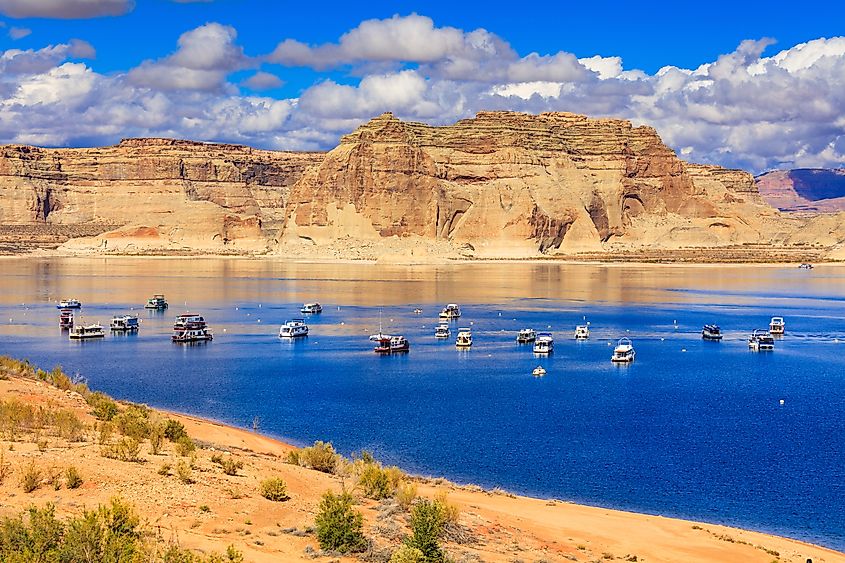
Lake Powell derives its name from John Wesley Powell, a distinguished Civil War veteran renowned for his pioneering expeditions along extensive stretches of the Colorado River in 1869, navigating precarious waters aboard a fleet of diminutive wooden boats.
This monumental reservoir came into existence in September 1963, emerging as a testament to human ingenuity and engineering prowess. Entrusted to the stewardship of the National Park Service, Lake Powell serves as a pivotal component of the region's natural and recreational landscape, offering a haven for outdoor enthusiasts and a reservoir of water resources crucial to the surrounding communities.
Construction

Lake Powell owes its existence to a monumental engineering endeavor that involved deliberate inundation of the majestic Glen Canyon, a process orchestrated by manipulating the outflow of the Colorado River. Through strategic adjustment of the Glen Canyon Dam's outflow, water cascaded into the canyon's intricate network of basins, gradually transforming them into the sprawling reservoir now known as Lake Powell. This method of reservoir creation mirrors the approach employed in the establishment of several other lakes in the region, all achieved by channeling the flow of the Colorado River.
The ambitious construction initiative commenced with the inaugural demolition blast in 1956, signaling the commencement of efforts to clear tunnels aimed at redirecting the river's flow. By 1959, water began coursing through these meticulously engineered passageways, heralding the onset of dam construction. Over the ensuing four years, a symphony of concrete pouring and dam erection unfolded, culminating in the realization of the basin destined to evolve into Lake Powell. The culmination of construction efforts arrived in September 1963, marking the official completion of the project.
However, the journey to full fruition was far from over. It took 16 years for the reservoir to reach its maximum capacity, cresting at the optimal elevation of 1,100 meters in 1980, a testament to the gradual yet resolute process of filling the expansive body of water.
As for its geographical location, Lake Powell is nestled in the northern reaches of Arizona, extending its embrace into the southern expanse of Utah. It forms an integral part of the Colorado River within the picturesque confines of the Glen Canyon National Recreation Area, where its shimmering waters beckon to adventurers and nature enthusiasts alike.
Purpose and Recreation

Lake Powell serves a dual role as both a crucial water storage reservoir for the upper states of the Colorado River Compact—comprising New Mexico, Colorado, Utah, and Wyoming—and a vibrant hub of recreational activity. Welcoming approximately two million visitors annually, Lake Powell has firmly established itself as a premier tourist destination, celebrated for its breathtaking scenery, iconic landmarks, and diverse array of outdoor pursuits.
Renowned for its captivating vistas and geological wonders, Lake Powell offers an unparalleled backdrop for a multitude of recreational adventures. Water activities reign supreme, with a rich tapestry of options including rafting excursions and leisurely cruises, particularly popular in the enchanting environs of Horseshoe Bend. Moreover, the lake boasts a profusion of houseboats available for short-term rentals or extended sojourns, providing an idyllic base for exploration amidst the tranquil waters and rugged terrain.
At the heart of Lake Powell's recreational allure lies the bustling Lake Powell Marina, serving as a bustling nexus for water sports enthusiasts seeking thrills upon the shimmering expanse. Yet, despite its enduring popularity, the lake has encountered some obstacles in recent years, which have posed challenges to certain recreational activities, underscoring the delicate balance between human enjoyment and environmental stewardship.
Threats to the Lake

Regrettably, Lake Powell's environment faces a significant threat. In 2021, the reservoir's water level hit an all-time low, with projections indicating further declines in the coming months. Climate change emerges as the primary driver behind this decline, fueling widespread drought across the United States.
This dwindling water supply not only disrupts recreational activities on the lake but also diminishes the availability of water for users across the entire Colorado River Basin. Escalating temperatures and dwindling precipitation patterns have intensified and prolonged drought conditions, impacting Lake Powell and numerous other reservoirs and natural lakes throughout the region.
Another pressing concern for Lake Powell's natural ecosystem is the proliferation of invasive species. Among the most notorious invaders are zebra mussels and Quagga mussels, small yet insidious crustaceans capable of wreaking havoc on aquatic ecosystems. These invasive species disrupt delicate food chains and ecosystems by voraciously consuming zooplankton and algae, depriving native species of vital food sources and threatening their survival.
Transported to new waters by attaching to boat bottoms, these mussels proliferate rapidly upon introduction, posing a grave threat to native flora and fauna. Moreover, their presence poses a tangible threat to infrastructure, including boats, canyon walls, dams, and reservoir structures.
Understanding the intricate interplay between climate change and human activity is paramount in mitigating further damage to these invaluable resources and ecosystems. By adopting a holistic approach that considers the broader ecological context, we can strive to ensure the enduring vitality of Lake Powell and similar bodies of water for generations to come.


